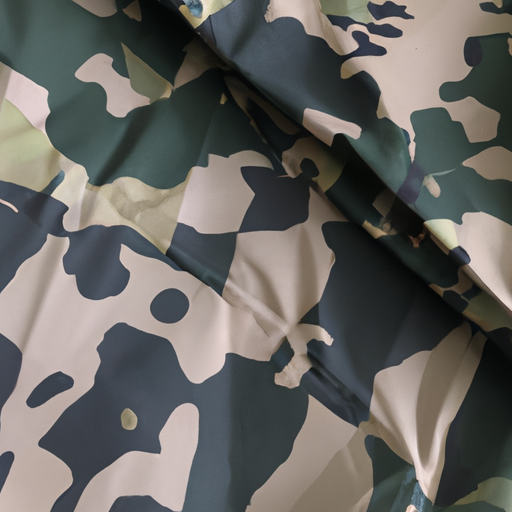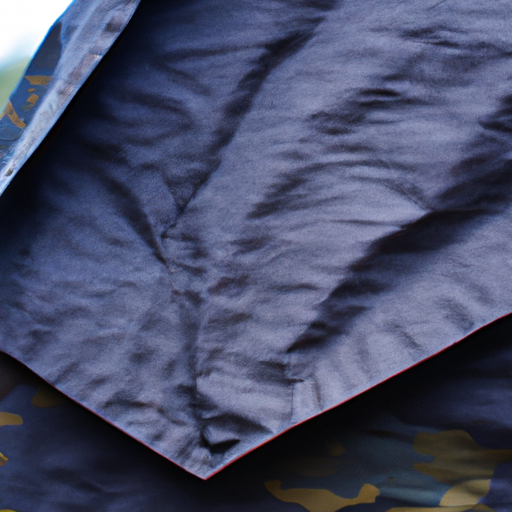Introduction
When it comes to outdoor activities and camping, breathable fabrics are essential for comfort and safety. Breathable fabrics allow air to pass through them, which helps to keep the body cool and dry. This is especially important when engaging in activities that involve physical exertion, such as hiking, running, or camping. Breathable fabrics also help to reduce the risk of overheating and dehydration. In addition, breathable fabrics are lightweight and often provide protection from the elements, such as wind and rain. This makes them ideal for outdoor activities and camping. In this article, we will discuss the different types of breathable fabrics available and how to choose the right one for your needs.
The Benefits of Wearing Breathable Fabrics for Outdoor Activities
When it comes to outdoor activities, wearing breathable fabrics is a must. Not only do they keep you cool and comfortable, but they also provide a number of other benefits. Here are just a few of the reasons why you should consider wearing breathable fabrics for your next outdoor adventure.
First, breathable fabrics allow your skin to breathe. This means that your body can regulate its temperature more efficiently, which can help you stay cool and comfortable during strenuous activities. Breathable fabrics also help to wick away sweat, which can help keep you dry and prevent chafing.
Second, breathable fabrics are lightweight and flexible. This makes them ideal for activities like running, hiking, and biking, as they won’t weigh you down or restrict your movement. Breathable fabrics also tend to be more durable than other fabrics, so they’ll last longer and won’t need to be replaced as often.
Finally, breathable fabrics are often made from natural materials like cotton and wool, which are better for the environment than synthetic fabrics. This means that you can feel good about wearing breathable fabrics, knowing that you’re helping to reduce your environmental impact.
All in all, breathable fabrics are a great choice for outdoor activities. Not only do they keep you cool and comfortable, but they also provide a number of other benefits. So the next time you’re heading out for an outdoor adventure, make sure to wear breathable fabrics!
How to Choose the Right Breathable Fabric for Your Camping Trip
When it comes to choosing the right breathable fabric for your camping trip, there are a few things to consider. First, think about the climate you’ll be camping in. If you’re camping in a hot and humid climate, you’ll want to choose a fabric that is lightweight and airy, such as cotton or linen. These fabrics will help keep you cool and comfortable. On the other hand, if you’re camping in a cooler climate, you’ll want to choose a fabric that is thicker and more insulating, such as wool or fleece.
Next, consider the activities you’ll be doing while camping. If you’ll be doing a lot of hiking or other physical activities, you’ll want to choose a fabric that is lightweight and breathable, such as nylon or polyester. These fabrics will help keep you cool and dry while you’re on the move.
Finally, think about the durability of the fabric. If you’re camping in a rugged environment, you’ll want to choose a fabric that is strong and durable, such as canvas or denim. These fabrics will stand up to wear and tear better than lighter fabrics.
No matter what type of fabric you choose, make sure it is comfortable and breathable. That way, you can enjoy your camping trip without worrying about being too hot or too cold.
The Best Breathable Fabrics for Hiking and Backpacking
When it comes to hiking and backpacking, breathable fabrics are essential for keeping you comfortable and dry. Whether you’re trekking through the woods or scaling a mountain, the right fabric can make all the difference. Here are some of the best breathable fabrics for hiking and backpacking:
1. Merino Wool: Merino wool is a great choice for hikers and backpackers because it’s lightweight, breathable, and moisture-wicking. It’s also naturally odor-resistant, so you won’t have to worry about smelling bad after a long day on the trail.
2. Nylon: Nylon is a synthetic fabric that’s lightweight and breathable. It’s also quick-drying, so you won’t have to worry about getting wet and cold if you get caught in a rainstorm.
3. Polyester: Polyester is another synthetic fabric that’s lightweight and breathable. It’s also quick-drying and wrinkle-resistant, so it’s perfect for long hikes and backpacking trips.
4. Spandex: Spandex is a stretchy fabric that’s lightweight and breathable. It’s also moisture-wicking, so it’s great for keeping you dry and comfortable.
5. Cotton: Cotton is a natural fabric that’s lightweight and breathable. It’s also absorbent, so it’s great for keeping you cool in hot weather.
No matter what type of fabric you choose, make sure it’s lightweight and breathable so you can stay comfortable and dry on your next hiking or backpacking adventure.
The Pros and Cons of Synthetic vs. Natural Breathable Fabrics
When it comes to choosing breathable fabrics, you have two main options: synthetic and natural. Both have their pros and cons, so it’s important to consider them carefully before making a decision.
Let’s start with synthetic fabrics. On the plus side, they are usually more affordable than natural fabrics, and they are often more durable and easier to care for. Synthetic fabrics are also usually more resistant to wrinkles and fading, so they can last longer. On the downside, synthetic fabrics are not as breathable as natural fabrics, so they can be uncomfortable to wear in hot weather.
Now let’s look at natural fabrics. On the plus side, they are usually more breathable than synthetic fabrics, so they can be more comfortable to wear in hot weather. Natural fabrics are also usually softer and more luxurious than synthetic fabrics. On the downside, natural fabrics are usually more expensive than synthetic fabrics, and they can be more prone to wrinkles and fading.
In the end, the choice between synthetic and natural breathable fabrics comes down to personal preference. Consider your budget, the climate you live in, and the type of activities you plan to do while wearing the fabric before making a decision.
Tips for Caring for Breathable Fabrics to Keep Them in Good Condition
1. Always read the care instructions on the label before washing breathable fabrics. This will help you determine the best way to care for the fabric and keep it in good condition.
2. Use a mild detergent when washing breathable fabrics. Avoid using harsh detergents or fabric softeners, as these can damage the fabric and reduce its breathability.
3. Wash breathable fabrics in cold water. Hot water can damage the fabric and reduce its breathability.
4. Hang breathable fabrics to dry. Avoid using a dryer, as the heat can damage the fabric and reduce its breathability.
5. Avoid using bleach or other harsh chemicals when cleaning breathable fabrics. These can damage the fabric and reduce its breathability.
6. Avoid ironing breathable fabrics. The heat from the iron can damage the fabric and reduce its breathability.
7. Store breathable fabrics in a cool, dry place. Avoid storing them in direct sunlight, as this can damage the fabric and reduce its breathability.
8. Avoid wearing breathable fabrics in extreme temperatures. This can damage the fabric and reduce its breathability.
Conclusion
Breathable fabrics are an essential part of outdoor and camping gear. They help keep you cool and comfortable in hot weather, and dry and warm in cold weather. They also help protect you from the elements, such as wind, rain, and sun. With the right breathable fabric, you can enjoy your outdoor and camping adventures with greater comfort and safety.

